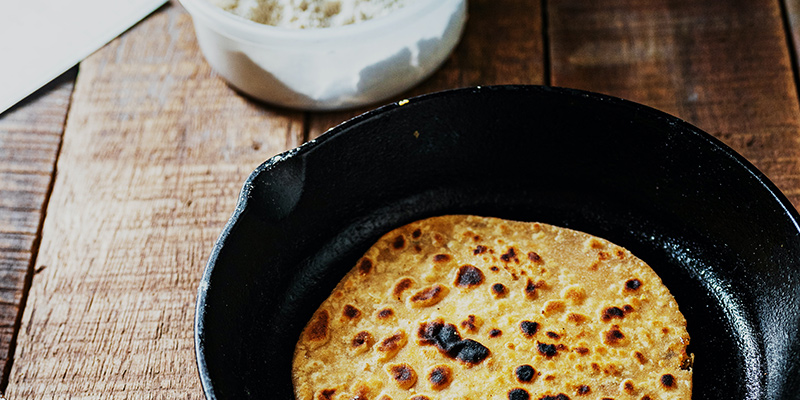In the mid-90s, my mother paid a visit to an aunt who had emigrated to Scandinavia and settled in Stockholm, Sweden, for over two decades. Of the many memories she held on to from that trip abroad, her most notable was the culture shock she suffered at a lunch that my aunt’s neighbour had hosted in honour of the guest from Africa.
Swedish staples were laid out: cinnamon buns, pancakes, pea soup, mashed potatoes, pickled cucumbers, cheese and lots of bread. After sampling foods that did not appeal to her palate, my mother turned to my aunt and whispered in Dholuo, a touch of concern in her voice, “Gikelo chiemo saa adi?” What time are they bringing out the food?
We are what we eat and food is a social identifier; being thousands of kilometres from home, my mother was simply looking for the familiar in a foreign place. The food choices that one makes are a significant indicator of one’s cultural identity in a foreign country. When significant numbers of Kenyans started seeking economic and educational opportunities in the West in the early 80s and 90s, the essential items that they would request to receive from home were largely food items.
Some of the most popular choices were maize flour, chapatis, Farmer’s Choice sausages, local flavours such as the Royco brand of food seasoning and indigenous green vegetables. Things have of course drastically changed. Foods from Asian, Mediterranean and African cultures that were once considered exotic are now readily available in the supermarkets of many European capitals.
Nothing says home like the taste of food. In fact, finding authentic African food becomes a way of finding one’s grounding and establishing social solidarity. When I moved from Kenya to a Dutch suburb just outside Amsterdam, one of the first things I went out in search of was our food.
Family members would call from home and ask with great concern whether I was able to find food. On one occasion, I turned on the video on my cell phone to show them the boiled corn I was chomping on that I had bought in an African market in Amsterdam; they were duly reassured.
The villager in Europe
My first Kenyan contacts in the Netherlands spent a great deal of time pointing out to me where in Amsterdam I could get “our food”. I was shown the Kenyan-owned restaurant where I could get a taste of home. I discovered the Biljmermeer neighbourhood in Zuidoost, the South-East of Amsterdam, known for its African presence drawn from Suriname, the former Dutch colony in South America, and the significant constituency of West African immigrants.
I was pointed to the Moroccan neighbourhoods in Nieuw-West for authentic shawarma, and for rotis and chapatis, to the Asian supermarkets dotting the Amstelveen suburbs that cater to a growing South-Asian expatriate community.
As a conscious pan-Africanist raising young children in a European capital, my food choices have become something of a political statement. I am reminded of assassinated Burkinabé revolutionary leader Thomas Sankara’s enduring statement:
“Where is imperialism? Look at your plates when you eat. These imported grains of rice, corn and millet — that is imperialism’’.
The common narrative is how, largely through imperialism, colonialism and the now dominant neo-liberal agricultural policies, and Western staples, particularly wheat, have influenced the non-Western world. What is not talked about enough is how the Global South is impacting the West, one plate at a time.
In a sense, Europe’s multicultural dynamics are best illustrated by the food on your plate. Besides the politics of identity that has set me off in search of flavourful sweet potatoes, cassava, indigenous vegetables, plantains and tilapia in pop-up African markets in Amsterdam, food has also become a big pointer of my multicultural influences. As an East African, my food choices are heavily influenced by South Asian and Middle-Eastern cuisines.
I remember the first Asian supermarket I spotted in the upmarket Amstelveen suburb of Amsterdam. When I walked in, I struck an immediate rapport with the storekeeper, establishing his country of origin, greeting him in Hindi and asking about the varieties of dhaal, dengu, beans, basmati rice, spices and, of course, chapati available. When I crossed over to a Middle-Eastern grocery store, I switched to an Arabic salutation to express the joy of finding familiar foods. An Ethiopian woman I met at a pop-up market remarked about Kenyan love of Indian food and my response turned into a historical lesson on the centuries of exchange between the East Coast of Africa and the Indian sub-continent via the Indian Ocean.
While African food is still limited to African hubs, with the occasional sighting of an Ethiopian or Eritrean restaurant, Asian-inspired cuisine is widespread. I can find chapatis in many places in Amsterdam and this points to how the humble chapati and pishori or basmati rice are perhaps the herald of the Asian century. Every European city now has a sampling of Asian fine dining restaurants, from Japanese, to Chinese, Indian, Korean, Indonesian and Thai cuisine.
Chapo lives matter
It is almost impossible to talk about culinary influences without encountering imperialism and resistance and the chapati movement serves as a great illustration of culinary globalisation. I have been thinking about the rapid rise of the chapati and the socio-political history of this popular South-Asian flat bread.
About a century ago, way before the arrival of British imperialism in Kenya, a curious incident occurred in India in 1857. Mark Thornhill, a British magistrate serving in the town of Muttra, now Mathura, discovered after some investigations that chapatis were travelling up to 300 kilometres across India. This bizarre distribution of chapatis set off the panic buttons in the British ranks.
The rapid movement of chapatis from hand to hand, village to village had all the markings of a conspiracy and a rebellion. Police runners would bake and hand over the chapatis to their colleagues who in turn would keep the chain going. The chapatis were unmarked and those who accepted the offering would make more batches and pass them along, sometimes moving them up to 300 kilometres in one night.
The chapati moved from village to village with the sort of efficiency that would today be described as viral. It did not help matters that the police were the conduits of this underground chapati railroad and a deep sense of unease spread across the British ranks. A revolt did eventually break out later that year and the movement of chapati was seen as part of the campaign of mobilisation.
While a century ago the chapati served as a symbol of agitation, and was the inspiration for a mutiny against British occupation, in the East African colony where the South-Asian labourers brought in to construct a railway from Mombasa in Kenya to Uganda had stayed on and built an influential minority community, the chapati would a century later emerge as a social leveller in Kenya.
In my formative years in the 70s and 80s, chapati was an exotic dish and a status food. Maize, the Kenyan staple, had been demoted to common fare and those wives who demonstrated the ability to make chapatis improved their social standing. Chapatis were a delicacy, only served during important feasts like Christmas and at highbrow weddings. In Nairobi today, the chapati is about the easiest food to find and consistent in its production across the board.
From the highbrow restaurants to the simple street food stalls, the chapati is the one common denominator. In a cash-strapped economy, chapati flour offers more value for money because of its versatility. It is easy to store, transport and can be consumed with a variety of accompaniments or on its own. Ugali, the dominant by-product of maize flour, lacks that kind of culinary diversity. Chapati is adaptable where ugali is not.
The great corn game
From the 1880s to the dawn of independence in the 60s, maize was the status food introduced by the British as a cheap food source for African farm labourers. With urbanisation and the introduction of wage labour and, later, mechanised mills, maize overtook millet and sorghum as the preferred food of the emerging elite who found it finer and more aspirational. It was considered sweeter, and it also doubled up as a cash crop.
In my home county of Siaya, celebrated historian E.S. Atieno Odhiambo argues in his book Siaya: The Historical Anthropology of an African landscape, that the introduction of maize into the texture of Siaya life was a mode of westernisation. Maize meal was known as kuon ongere, the white man’s ugali, eaten by those who had acquired a Western education. In the last 20 years or so, the chapati movement has grown. Presently, it is Kenya’s preferred fast food, more readily available than fried potato chips, and it has overtaken bread as a breakfast staple.
Chapati is made with wheat flour, and if we follow the logic of Yuval Noah Harari’s persuasive argument, in his book Sapiens: A Brief History of Humankind, that the wheat plant manipulated and domesticated Homo Sapiens to its advantage to become the global staple leading to the westernisation of our diet, we could say that Asia is manipulating the global palate. South-East Asian nations are now the world’s largest wheat-importing regions and consequently we are witnessing an Asianisation of our diets, the most telling sign yet that the future is Asian.
The story of the chapati’s movement across Africa and Europe is also the story of the power of multiculturalism and how the Asian and African diasporas use food to assert their identities and influence the foreign cultures they integrate into. The Japanese took sushi global. Chinese takeaway is a popular cultural marker of the North American fast food culture.
What we cook and eat is more than symbolism. My desire to preserve my culture is manifested through my food choices and culinary practices and this is a trait common to all migrants who find themselves negotiating minority positions in dominant cultures.
Asia and Europe have a long history of trade and the modern Silk Road continues to assert its influence on European culture. The largest supermarket chain in the Netherlands, Albert Heijn, sells a range of products aimed at marking Ramadhan in a country where a far right populist figure and leader of the third largest political party, PVV, Geert Wilders is infamous for his anti-Islamic and anti-immigrant sentiments.
These new flavours from Asia and now Africa challenge dominant narratives in subtle ways. From the street corners of the colonies, they are now to be found on the high streets of Europe. Asia’s population and material prosperity has gained traction in Europe and its cuisine is no longer the stereotypical cheap fast food but is now part of an expanding repertoire of fine dining.
Europe as a globalized pantry
The influx of African foods in the Netherlands, for example, is directly linked to its growing African diaspora. It greatly surprises my mother, living in Kenya and worried that I may be subsisting on bread, ham and cheese, that I eat pretty much the same food I would eat in Kenya.
It might be logistically harder to source coarse maize flour than it is to find chapatis but I no longer have to have a contact in the airlines in order to get a taste of home abroad. The proliferation of other foods in Europe shows the varied pathways of culinary globalisation and the inevitability of change brought about by migration.
In some pockets of Europe, the growing influence of minority food cultures has become a political issue. In 2016, Denmark’s Ministry of Cultural Affairs carried out a poll seeking to identify core Danish values. One revealing pointer from this survey was the prominence of eating consumption in the responses, elevated as a symbol of Danish identity and interpreted as part of a culture war and a stance over migration.
In the Netherlands, the influence of the former Dutch colonies — notably Indonesia and Suriname — on the national cuisine is well established. Nasi Goreng, a rice-based meal introduced by Indo-Dutch people, fries with satay or peanut sauce, Suriname sandwiches locally known as Surinaamse broodjes, now count as national dishes.
Spices from the Dutch East Indies penetrated local cuisines and the Dutch embraced these new flavours from abroad in much the same way that the British love curry and favourite English food choices are South-Asian in character.
With the changing food supply chains in the wake of the coronavirus pandemic, the questions of food politics and identity are emerging more prominently. There is a growing sentiment of European food nationalism, where eating local is associated with patriotism. European consumers, particularly those from the South, are increasingly interested in where their food comes from in order to support local farmers and preserve their cultures from foreign influences.
Since food is a cultural identifier, Europe’s politics of identity and belonging is bound to continue playing out on your dinner table. The revolution you might be looking for might just start on your plate.
–
This article is part of The Elephant Food Edition Series done in collaboration with Route to Food Initiative (RTFI). Views expressed in the article are not necessarily those of the RTFI.








